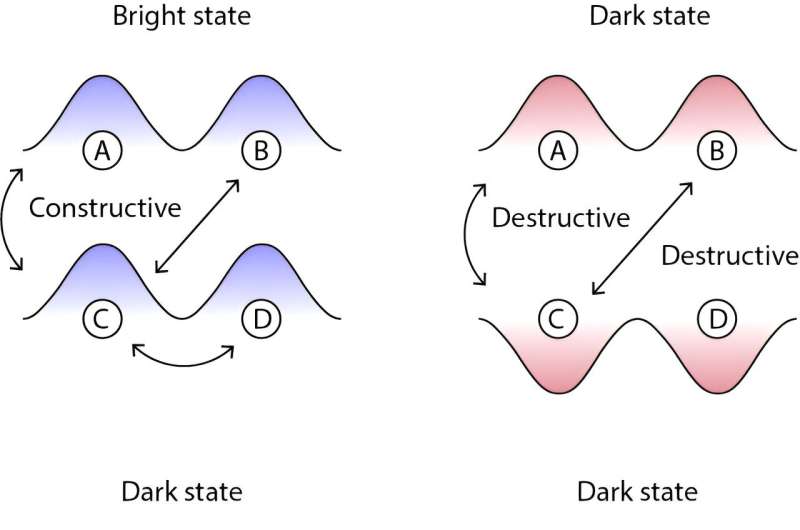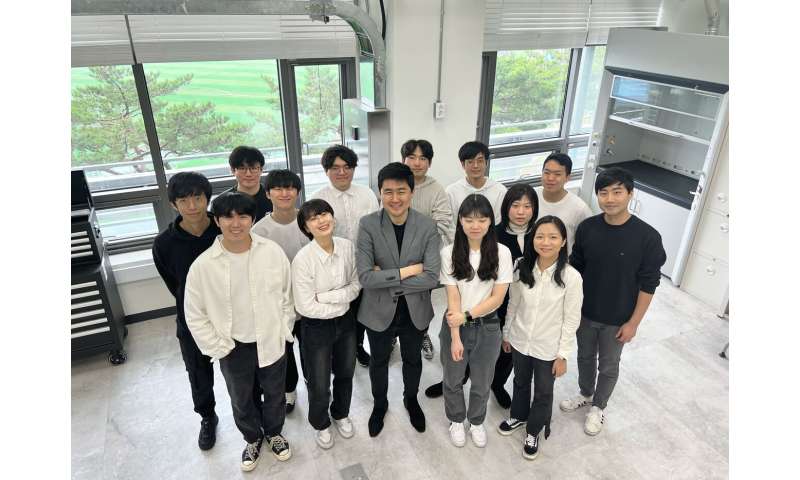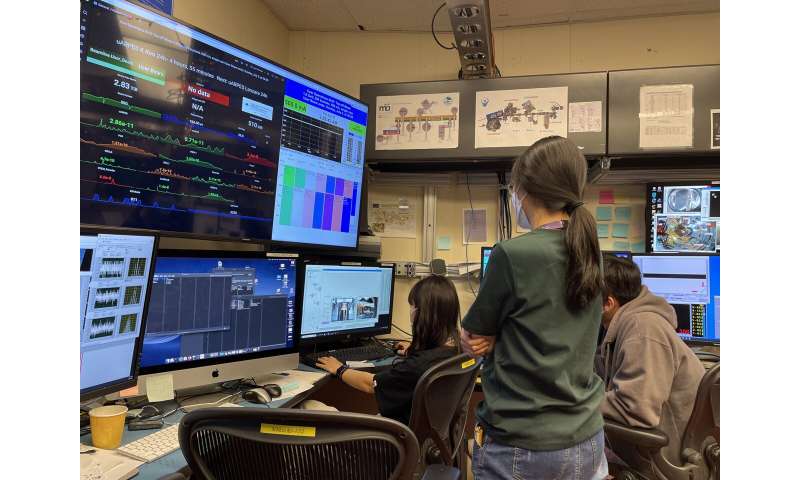Dark states are quantum states in which a system does not interact with external fields, such as light (i.e., photons) or electromagnetic fields. These states, which generally occur due to interferences between the pathways through which a system interacts with an external field, are undetectable using spectroscopic techniques.
Researchers at Yonsei University in South Korea and other institutes recently discovered some undetectable condensed-matter dark states in palladium diselenide, a quantum system with two pairs of sublattices in its primitive cell.
Their observations, outlined in a paper published in Nature Physics, could have interesting implications for the study of materials, quantum states and correlated phenomena.
“Angle-resolved photoemission spectroscopy is a powerful experimental technique for physicists to understand how electrons behave in solids,” Keun Su Kim, Professor of Physics at Yonsei University and co-author of the paper, told Phys.org.
“From experience, it has been well known that not all the electrons are detected by angle-resolved photoemission spectroscopy. In other words, some electrons are detectable but the others are not.”
For a long time, physicists assumed that the inability to detect some electrons using spectroscopic techniques was associated with the methods used to conduct experiments, rather than the intrinsic properties of materials.
However, in previous studies examining simple elemental materials with one pair of sublattices, such as graphene and black phosphorus, Kim and his colleagues showed that this elusiveness is in fact closely linked to the intrinsic properties of materials.

“We have dug into this problem to extend it to materials with two pairs of sublattices and found that there are some electrons that cannot be detected in any experimental conditions,” Kim said. “Simply speaking, we could see experimental signals only for electrons expected to be detectable (bright states) and could not see any experimental signals for electrons expected to be undetectable (dark states).”
To carry out their experiments, the researchers employed a technique known as angle-resolved photoemission spectroscopy. This widely used experimental technique leverages the photoelectric effect first discovered by Albert Einstein to gather information about the electronic structure of materials.
Essentially, Kim and his colleagues irradiated their samples with a high-energy photon beam. This beam of energy ejected some electrons from the sample, allowing them to collect information about the energy and momentum they exhibited while still in the sample.
“In this work, we studied three materials, palladium diselenides (PdSe2), cuprate superconductors (Bi2Sr2CaCu2O8+δ or Bi-2212), and lead halide perovskites (CsPbBr3),” Kim explained. “An important common property of these three materials is that they have certain crystal symmetries (multiple glide-mirror symmetries) that make all the electrons in the solid samples characterizable as one of four types.”
Essentially, the researchers found that electrons in quantum systems with two pairs of sublattices can be characterized into four different categories. One of these types of electrons could be detected using angle-resolved photoemission spectroscopy, while the other three types were undetectable, as they were in dark states.
“It is just a possibility for now, but our result offers a new way to explain one of the long-standing issues in the study of high-temperature superconductivity, called the ‘Fermi arc,'” Kim said. “Our nature is too complex to include everything in the theoretical model, and often you need to make a choice about what to include and what to exclude for approximation. Strictly speaking, there are sublattices in the unit structure of cuprate superconductors, but these sublattices have been overlooked so far.”
-

The research group. Credit: Yonsei University
-

Group members conducting angle-resolved photoemission spectroscopy experiments at synchrotron radiation Credit: Advanced Light Source, US, and Diamond Light Source, UK.
The recent work by this team demonstrates the existence of dark states in various quantum systems with two pairs of sublattices, including palladium diselenides, cuprate superconductors and lead halide perovskites. In the future, it could have important implications for the study of these materials, potentially broadening the understanding of their underlying physics.
“Our findings pose the question of whether it is really OK to leave out sublattices in the unit structure of cuprate superconductors when interpreting angle-resolved photoemission spectroscopy data collected from these materials,” Kim added. “Our plan for future research is to dig into the Fermi arc problem of cuprate superconductors in the same context but more deeply. We already have some promising results and are working on the next paper.”
More information:
Yoonah Chung et al, Dark states of electrons in a quantum system with two pairs of sublattices, Nature Physics (2024). DOI: 10.1038/s41567-024-02586-x
© 2024 Science X Network
Citation:
Study uncovers condensed-matter dark states in a quantum system with two pairs of sublattices (2024, August 22)
retrieved 22 August 2024
from
This document is subject to copyright. Apart from any fair dealing for the purpose of private study or research, no
part may be reproduced without the written permission. The content is provided for information purposes only.

